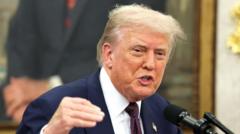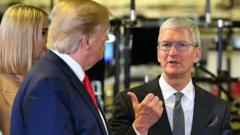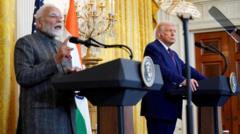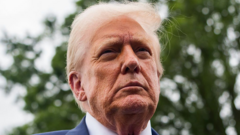Tariffs imposed by the Trump administration threaten the luxury goods market in the U.S., creating a challenging landscape for brands that heavily rely on American consumers' spending, which constituted 24% of global luxury purchases last year.
Luxury Goods Sector Faces Uncertainty Amid U.S. Tariffs on EU Products

Luxury Goods Sector Faces Uncertainty Amid U.S. Tariffs on EU Products
The new tariffs on European Union luxury items are reigniting concerns for high-end brands previously buoyed by American consumer spending.
American luxury brands, once poised for growth with expectations of deregulation and increased consumer spending, now confront new challenges as the Trump administration imposes a 20% tariff on European Union products. This sudden change has left manufacturers of cherished items, such as Chanel bags and Rolex watches, grappling with potential price increases and declining consumer access.
Last year, American shoppers contributed significantly—24%—to the total global luxury market, valued at $1.62 trillion, as reported by Bain & Company. However, recent tariffs threaten to disrupt this market stability, as luxury brands brace themselves for the implications of increased costs and reduced availability of their coveted European products.
Euan Rellie, co-founder of the investment bank BDA, which provides analysis to the fashion sector, expressed concern that the U.S. was seen as a potential lifeline for these brands, but recent policy changes signal otherwise. Major luxury corporations such as LVMH, Burberry, and Hermès have chosen to remain silent at this pivotal moment, avoiding any commentary on how tariffs could impact their businesses and pricing strategies.
LVMH, the largest luxury conglomerate with a portfolio including Dior and Louis Vuitton, generated 25% of its revenue from the U.S. in 2024. In particular, the American market's importance was underscored by the fact that Louis Vuitton is the sole European luxury brand maintaining production facilities in the United States. The potential for escalating prices, combined with a reduction in the availability of key products, has left luxury brands in a precarious situation.
As potential buyers wonder what might happen to the price tags of “Made in Italy,” “Made in France,” and “Made in Switzerland” items, the future of luxury goods in America remains uncertain, leading companies to develop strategies for a landscape marked by tariffs and consumer hesitance.





















